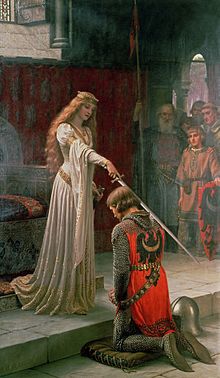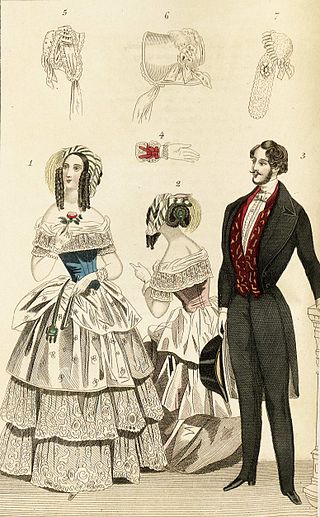
Victorian fashion consists of the various fashions and trends in British culture that emerged and developed in the United Kingdom and the British Empire throughout the Victorian era, roughly from the 1830s through the 1890s. The period saw many changes in fashion, including changes in styles, fashion technology and the methods of distribution. Various movement in architecture, literature, and the decorative and visual arts as well as a changing perception of gender roles also influenced fashion.
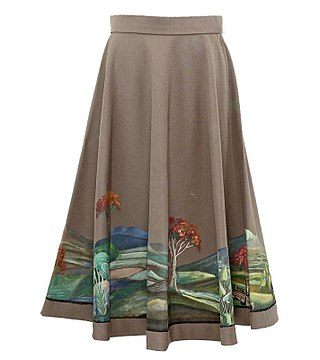
A skirt is the lower part of a dress or a separate outer garment that covers a person from the waist downwards.

1860s fashion in European and European-influenced countries is characterized by extremely full-skirted women's fashions relying on crinolines and hoops and the emergence of "alternative fashions" under the influence of the Artistic Dress movement.
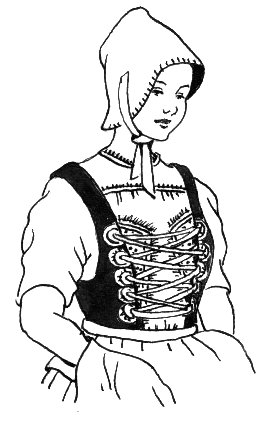
A bodice is an article of clothing traditionally for women and girls, covering the torso from the neck to the waist. The term typically refers to a specific type of upper garment common in Europe during the 16th to the 18th century, or to the upper portion of a modern dress to distinguish it from the skirt and sleeves. The name bodice is etymologically an odd plural spelling of "body" and comes from an older garment called a pair of bodies.

1840s fashion in European and European-influenced clothing is characterized by a narrow, natural shoulder line following the exaggerated puffed sleeves of the later 1820s and 1830s. The narrower shoulder was accompanied by a lower waistline for both men and women.

1850s fashion in Western and Western-influenced clothing is characterized by an increase in the width of women's skirts supported by crinolines or hoops, the mass production of sewing machines, and the beginnings of dress reform. Masculine styles began to originate more in London, while female fashions originated almost exclusively in Paris.

Fashion in the period 1550–1600 in Western European clothing was characterized by increased opulence. Contrasting fabrics, slashes, embroidery, applied trims, and other forms of surface ornamentation remained prominent. The wide silhouette, conical for women with breadth at the hips and broadly square for men with width at the shoulders had reached its peak in the 1530s, and by mid-century a tall, narrow line with a V-lined waist was back in fashion. Sleeves and women's skirts then began to widen again, with emphasis at the shoulder that would continue into the next century. The characteristic garment of the period was the ruff, which began as a modest ruffle attached to the neckband of a shirt or smock and grew into a separate garment of fine linen, trimmed with lace, cutwork or embroidery, and shaped into crisp, precise folds with starch and heated irons.

Fashion in the years 1750–1775 in European countries and the colonial Americas was characterised by greater abundance, elaboration and intricacy in clothing designs, loved by the Rococo artistic trends of the period. The French and English styles of fashion were very different from one another. French style was defined by elaborate court dress, colourful and rich in decoration, worn by such iconic fashion figures as Marie Antoinette.
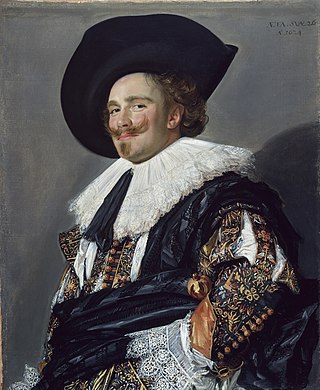
Fashion in the period 1600–1650 in Western European clothing is characterized by the disappearance of the ruff in favour of broad lace or linen collars. Waistlines rose through the period for both men and women. Other notable fashions included full, slashed sleeves and tall or broad hats with brims. For men, hose disappeared in favour of breeches.
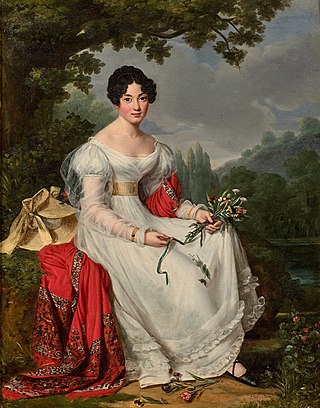
During the 1820s in European and European-influenced countries, fashionable women's clothing styles transitioned away from the classically influenced "Empire"/"Regency" styles of c. 1795–1820 and re-adopted elements that had been characteristic of most of the 18th century, such as full skirts and clearly visible corseting of the natural waist.

Fashion in the period 1650–1700 in Western European clothing is characterized by rapid change. The style of this era is known as Baroque. Following the end of the Thirty Years' War and the Restoration of England's Charles II, military influences in men's clothing were replaced by a brief period of decorative exuberance which then sobered into the coat, waistcoat and breeches costume that would reign for the next century and a half. In the normal cycle of fashion, the broad, high-waisted silhouette of the previous period was replaced by a long, lean line with a low waist for both men and women. This period also marked the rise of the periwig as an essential item of men's fashion.

The robe à la polonaise or polonaise is a woman's garment of the later 1770s and 1780s or a similar revival style of the 1870s inspired by Polish national costume, consisting of a gown with a cutaway, draped and swagged overskirt, worn over an underskirt or petticoat. From the late 19th century, the term polonaise also described a fitted overdress which extended into long panels over the underskirt, but was not necessarily draped or swagged.

Fashion in the period 1700–1750 in European and European-influenced countries is characterized by a widening silhouette for both men and women following the tall, narrow look of the 1680s and 90s. This era is defined as late Baroque/Rococo style. The new fashion trends introduced during this era had a greater impact on society, affecting not only royalty and aristocrats, but also middle and even lower classes. Clothing during this time can be characterized by soft pastels, light, airy, and asymmetrical designs, and playful styles. Wigs remained essential for men and women of substance, and were often white; natural hair was powdered to achieve the fashionable look. The costume of the eighteenth century, if lacking in the refinement and grace of earlier times, was distinctly quaint and picturesque.

A pleat is a type of fold formed by doubling fabric back upon itself and securing it in place. It is commonly used in clothing and upholstery to gather a wide piece of fabric to a narrower circumference.

Fashion in the period 1500–1550 in Western Europe is marked by very thick, big and voluminous clothing worn in an abundance of layers. Contrasting fabrics, slashes, embroidery, applied trims, and other forms of surface ornamentation became prominent. The tall, narrow lines of the late Medieval period were replaced with a wide silhouette, conical for women with breadth at the hips and broadly square for men with width at the shoulders. Sleeves were a center of attention, and were puffed, slashed, cuffed, and turned back to reveal contrasting linings.

Fashion in 15th-century Europe was characterized by a series of extremes and extravagances, from the voluminous robes called houppelandes with their sweeping floor-length sleeves to the revealing doublets and hose of Renaissance Italy. Hats, hoods, and other headdresses assumed increasing importance, and were draped, jewelled, and feathered.

Fashion in fourteenth-century Europe was marked by the beginning of a period of experimentation with different forms of clothing. Costume historian James Laver suggests that the mid-14th century marks the emergence of recognizable "fashion" in clothing, in which Fernand Braudel concurs. The draped garments and straight seams of previous centuries were replaced by curved seams and the beginnings of tailoring, which allowed clothing to more closely fit the human form. Also, the use of lacing and buttons allowed a more snug fit to clothing.

Twelfth century European fashion was simple and differed only in details from the clothing of the preceding centuries. Men wore knee-length tunics for most activities, and men of the upper classes wore long tunics, with hose and mantle or cloaks. Women wore long tunics or gowns. A close fit to the body, full skirts, and long flaring sleeves were characteristic of upper-class fashion for both men and women.

Fashion in the twenty years between 1775 and 1795 in Western culture became simpler and less elaborate. These changes were a result of emerging modern ideals of selfhood, the declining fashionability of highly elaborate Rococo styles, and the widespread embrace of the rationalistic or "classical" ideals of Enlightenment philosophes.

A casaquin is a short-length closely fitted coat worn by middle- and upper-class women during the 18th century. The garment was popular in both France and Italy. A casaquin was made from linen which was then covered by embroidery, silk and lace to decorate. The design was influenced by religious beliefs or events as well as reflecting on stylistic features of the time or of individual designers. Casaquins were worn by a range of females - from working-class women to upper-class ladies. The casaquin even influenced women from the Netherlands during the 18th century to introduce their own version of a casaquin called a "Kassekijntje".





